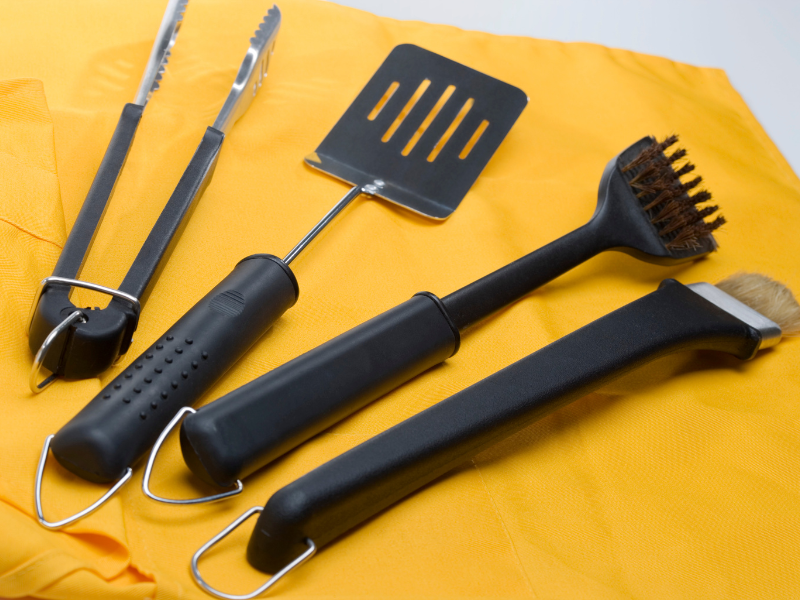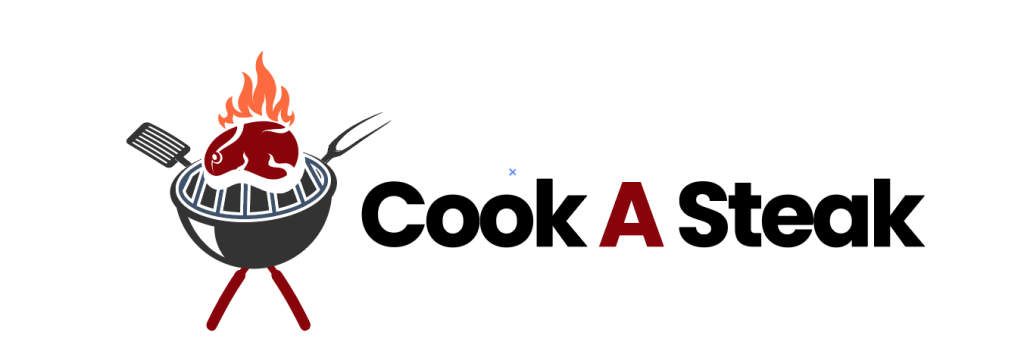
Ready to take your grilling game to the next level? From essential tools and safety tips to advanced techniques, this guide has everything you need for a flawless and flavorful BBQ experience. Equip yourself with the right gear, master preheating, and cook with confidence—because great grilling starts with preparation!
Essential Grilling Tools for Success

Equip yourself with the essential tools required for successful grilling. This section details the must-have equipment that ensures efficiency and safety while grilling:
- Tongs: Long-handled tongs are vital for handling food on the grill. Their length allows you to turn or move items without risking burns or injuries from close proximity to the intense heat. Additionally, the grip provided by tongs is perfect for flipping meat, vegetables, or other grill items securely.
- Grill Brushes: Maintaining a clean grill is crucial for both hygiene and flavor. Sturdy grill brushes effectively remove residual food particles and grease from grill grates. A clean grill prevents food contamination and helps avoid flare-ups caused by grease buildup. Regular brushing immediately after cooking, when the grill is still warm, ensures easier and more effective cleaning.
- Thermometers: Precise meat thermometers are indispensable for monitoring internal temperatures. Whether you are grilling steaks, poultry, or even fish, achieving the desired doneness requires careful temperature management. Instant-read thermometers provide quick, accurate readings, ensuring that your food is neither undercooked nor overcooked, thus ensuring safety and optimal flavor.
- Fire Extinguisher: Safety should always be a top priority when grilling. Having a fire extinguisher within reach ensures that you can promptly handle potential flare-ups and minor fires. It is advisable to choose a fire extinguisher that is rated for class B and C fires, which are common in grilling scenarios.
Investing in high-quality grilling tools will significantly enhance your grilling experience. Not only do these tools improve efficiency and ensure safety, but they also contribute to producing superior culinary results. By equipping yourself with the right tongs, grill brushes, thermometers, and fire extinguishers, you lay the foundation for a successful and enjoyable grilling adventure.
Preheating Techniques
Preheating your grill is essential for achieving optimal cooking results and ensuring food safety. Follow these clear, concise steps to master preheating your grill effectively:
- Ignite the Grill: Begin by lighting your grill according to the manufacturer’s instructions. Typically, this involves turning on the gas and using the ignition switch or lighting the charcoal with lighter fluid or a chimney starter. Close the lid to retain heat, which accelerates the preheating process.
- Heat Duration: Allow the grill to preheat for at least 10-15 minutes. This ensures that the grill reaches a stable, uniform temperature, which is critical for the even cooking of your food. For charcoal grills, wait until the coals are covered with a light layer of ash.
- Desired Temperature: Aim for a temperature of 450-500 degrees Fahrenheit for most grilling tasks. This range is ideal for searing, caramelizing, and cooking food efficiently. Use a built-in thermometer or an external one to monitor the temperature accurately.
- Non-Stick Surface: Ensuring the grates are hot enough is crucial to reducing the risk of food sticking to the grill. A well-preheated grill creates an immediate sear, which locks in moisture and flavor while preventing meat or vegetables from adhering to the grates. You may also brush the grates with a high-heat oil to enhance non-stick properties.
Consistent preheating, particularly to a specific temperature range, not only contributes to better cooking results but also simplifies the post-cooking cleanup of the grill grates. For example, a poorly preheated grill can lead to uneven cooking or, worse, undercooked food that may pose health risks. Conversely, effective preheating allows your food to cook uniformly and achieve the desired textures, enhancing the overall grilling experience.
Furthermore, consider the type of food you are grilling and adjust the preheating process accordingly. For thicker cuts of meat, a higher initial temperature can be beneficial for achieving a perfect sear while maintaining juiciness inside. For delicate items like fish or vegetables, ensure that the temperature is moderate to avoid burning.
Applying these preheating techniques diligently will elevate your grilling prowess, resulting in delicious, well-cooked meals every time. By following these steps, you ensure food safety and enhance the efficiency and enjoyment of your grilling endeavors.
Implementing Grilling Safety Practices
Safety is paramount when grilling. Following these detailed guidelines ensures a secure grilling environment and minimizes the risk of accidents. This how-to guide provides clear, actionable advice on incorporating essential safety practices into your grilling routine.
Fire Extinguisher
Always keep a fire extinguisher within reach while grilling. In the event of unexpected flare-ups or grease fires, a readily accessible fire extinguisher allows for immediate response, preventing small incidents from turning into major hazards. Place the extinguisher in a location where it is easily reachable, but not so close to the grill that it becomes a hazard itself.
Long-Handled Tools
Utilize long-handled utensils to prevent burns from grill heat. Tongs, spatulas, and forks designed for grilling typically feature extended handles, allowing you to handle food safely without getting too close to the intense heat. Opt for stainless steel tools as they are durable and withstand high temperatures.
Appropriate Attire
Avoid wearing loose clothing that can easily catch fire. Instead, choose fitted garments made from non-synthetic materials when grilling. Synthetic fabrics can melt onto your skin if exposed to high heat. Consider using a grilling apron made from flame-retardant materials for added protection.
Safe Grilling Area
Ensure the grill is placed on a stable, flat surface to prevent tipping. Position the grill away from flammable materials such as deck railings, dry leaves, and overhanging branches. Maintain a clear zone around the grill to prevent accidents, keeping pets and children at a safe distance. Grilling in a well-ventilated area is crucial; never use a grill indoors or in enclosed spaces where dangerous carbon monoxide can accumulate.
Proper Ventilation
Good ventilation when grilling is essential. Using the grill in open areas prevents the buildup of harmful fumes, including carbon monoxide. Ensure the grill’s vents are not obstructed, allowing for proper airflow and consistent heating.
Checking for Gas Leaks
If using a gas grill, always check for gas leaks prior to ignition. Conduct a leak test by applying a soapy water solution to the gas connections. Bubbles forming indicate a gas leak, necessitating immediate repair before use. Regular maintenance and inspection of the gas lines and connections are pivotal for safe grilling.
Controlled Lighting
Use appropriate ignition methods such as grill lighters or matches when lighting charcoal or gas grills. Avoid using lighter fluid excessively, as it can cause flare-ups. For charcoal grills, opt for a chimney starter to ignite coals safely and efficiently.
Using a Drip Pan
Place a drip pan beneath the grilling surface to catch fat drippings and reduce the risk of flare-ups. This also simplifies cleaning and maintains a cleaner grilling environment.
Always remain vigilant and never leave the grill unattended. These safety measures ensure that your grilling experience is not only successful but also secure for both novices and seasoned grillers. Implementing these guidelines into your grilling routine can transform potentially risky situations into manageable and safe practices, thereby enhancing your overall grilling enjoyment.
Advanced Grilling Techniques and Recipe Adaptation
Experienced grillers can elevate their culinary prowess by mastering advanced grilling techniques and adapting recipes specifically for the grill. This guide provides clear, actionable steps to help achieve sophisticated flavor profiles and textures.
- Reverse Searing: Reverse searing ensures a perfect balance between tender interiors and flavorful exteriors. Begin by slow-cooking the meat at a low temperature, which allows the internal temperature to rise gradually. Once the meat reaches the desired internal temperature, transfer it to a high-heat zone on the grill. This final sear creates a delicious crust, locking in juices and enhancing flavor.
- Smoker Box Usage: Introducing a smoker box to your grilling setup can infuse your dishes with complex, smoky flavors. Fill the smoker box with your choice of wood chips (e.g., hickory, mesquite) and place it directly on the grill grates. The smoke produced will envelop the food, adding a deep, aromatic layer that enhances meats, vegetables, and even cheeses.
- Vegetable Mastery: Grilling vegetables requires an understanding of their specific characteristics and ideal cooking times. Thinly slice denser vegetables like carrots and potatoes to ensure even cooking. For softer vegetables like bell peppers and zucchini, a quick sear is often sufficient. Maintain a consistent medium-high heat and use a vegetable basket to prevent smaller pieces from falling through the grates. Properly grilled vegetables should have a slight char and tender yet firm texture.
- Grilled Steak Perfection: Adapting steak recipes to the grill involves mastering marination and searing techniques. Marinate the steak for several hours using a mixture of oil, acid (such as lemon juice or vinegar), herbs, and spices. This process tenderizes the meat and imparts additional flavor. When ready to cook, sear the steak on high heat for a short duration on each side to achieve a caramelized crust. Then, move it to a cooler section of the grill to cook to the desired doneness.
By employing these advanced techniques and adapting your favorite recipes for the grill, mundane meals can be transformed into extraordinary culinary experiences. Experiment with different methods to find the perfect balance that suits your taste, and enjoy the enhanced depth and complexity these grilling strategies bring to your dishes.
